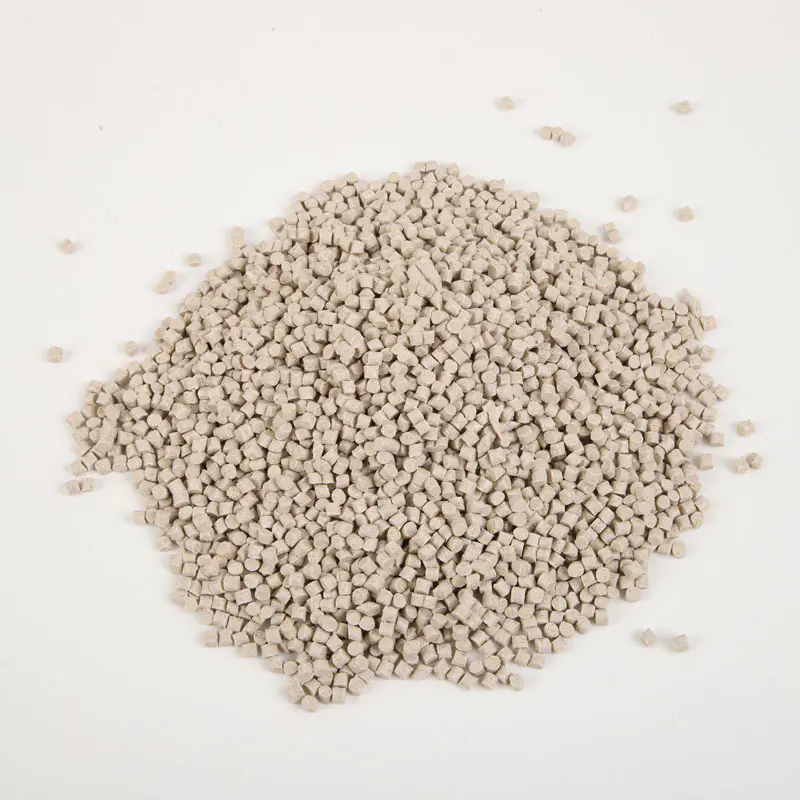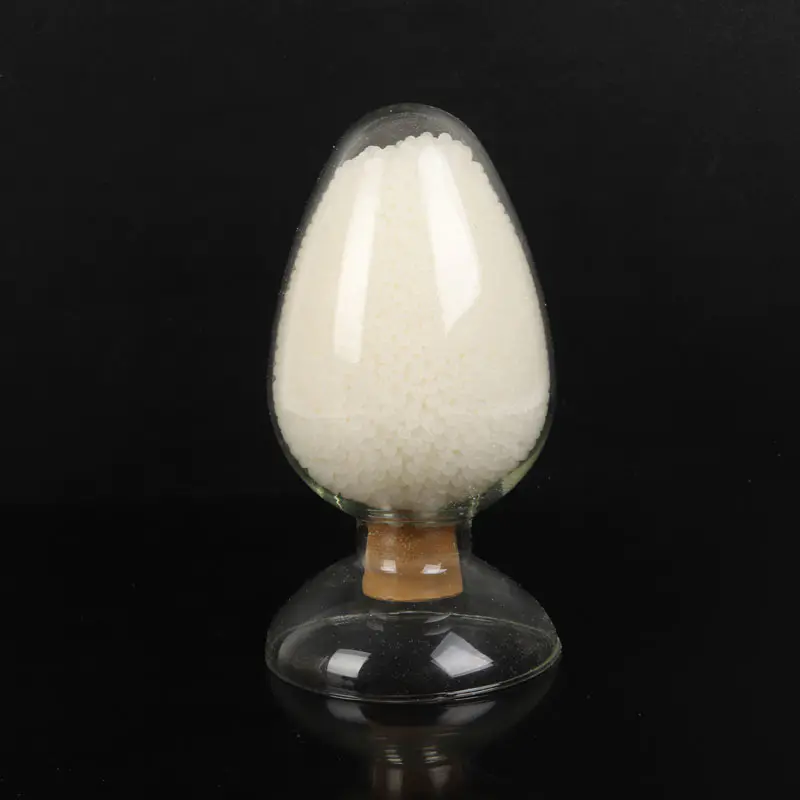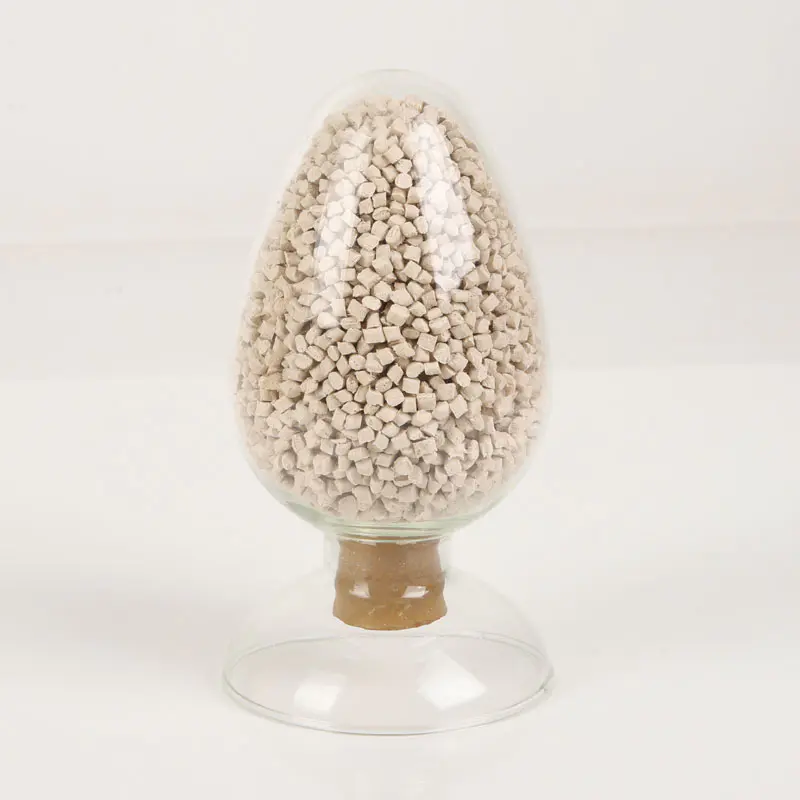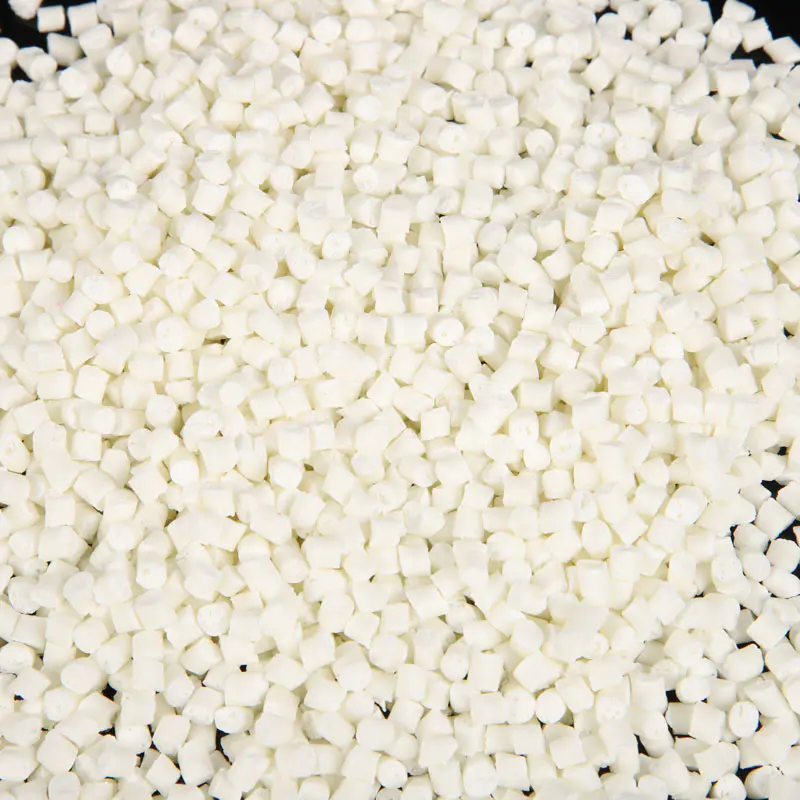Why choose Bio-Based Plastic for Sustainable Materials?
In an era of heightened environmental awareness and pressing demand to reduce reliance on fossil resources, bio-based plastics have emerged as one of the most promising alternatives to conventional petrochemical plastics.
What Is Bio-Based Plastic?
Definition and Differentiation
Bio-based plastic refers to polymer materials (fully or partially) derived from renewable biological sources such as plant biomass (corn starch, sugarcane, cellulose, algae, etc.), rather than from petroleum. They may be engineered to mimic the properties of conventional plastics (e.g., polyethylene, polypropylene, PET) or possess novel biodegradation or compostability features.
Categories of Bio-Based Plastics
Bio-based plastics can be grouped by source, structure, and performance:
-
Drop-in bio-based plastics: chemically identical to conventional plastics (e.g. bio-PE, bio-PET) but made from renewable feedstocks.
-
Structural bio-polymers: wholly new class (e.g. polylactic acid (PLA), polyhydroxyalkanoates (PHA), polybutylene succinate (PBS), polybutylene succinate adipate (PBSA)).
-
Blended or composite bio-plastics: mixing bio-based polymers with fibers, fillers, or additives to enhance performance.
These materials may or may not be biodegradable. The key is their derivation from renewable resources.
Core Product Example & Parameters
Below is a representative specification set of a bio-based plastic grade engineered for packaging applications, to illustrate the kind of technical data that is typically specified:
| Parameter | Typical Value / Range | Notes / Relevance |
|---|---|---|
| Polymer Type | PLA (Polylactic Acid) | Common bio-based polymer |
| Renewable Carbon Content | ≥ 90 % | Verified via ^14C testing |
| Melt Flow Index (190 °C, 2.16 kg) | 10 – 25 g/10 min | Processability indicator |
| Tensile Strength (MD/TD) | 50–70 MPa / 45–65 MPa | Mechanical robustness |
| Elongation at Break | 4–8 % | Material brittleness or flexibility |
| Glass Transition Temperature | 55-65 °C | Thermal usability threshold |
| Crystallization Rate | Moderate (varies with nucleating agents) | Impact on processing speed |
| Oxygen Transmission Rate (OTR) | 10–30 cc·mm/(m²·day·atm) | Barrier property for packaging |
| Water Vapor Transmission Rate (WVTR) | 0.8–3 g·mm/(m²·day·atm) | Moisture barrier characteristic |
This table shows how a specific grade can be parameterized to guide processing, performance, and suitability for target applications. Such grades are often customized with additives, stabilizers, nucleating agents, or fillers to fine-tune behavior.
Central Theme & Purpose
The primary aim of this article is to equip businesses, engineers, and sustainability strategists with a robust understanding of bio-based plastics — exploring origins, benefits, production mechanisms, application pathways, challenges, and market dynamics — so as to inform adoption decisions and innovation strategies in the transition toward a more sustainable plastics economy.
Why Choose Bio-Based Plastic?
Environmental Rationale
-
Lower carbon footprint: Because bio-based plastics draw carbon from atmospheric CO₂ during plant growth, in principle they can offset emissions compared to fossil-derived plastics.
-
Reduced fossil resource dependency: Shifting feedstocks from oil and gas to renewable biomass enhances supply resilience.
-
Potential biodegradability or compostability: Some bio-based polymers can decompose under controlled conditions, reducing long-term landfill loads.
-
Circular economy alignment: Bio-based plastics can integrate into circular design strategies when combined with recycling or composting systems.
Performance & Function Advantages
-
Material equivalence: Drop-in bio-PE or bio-PET deliver identical performance to fossil-based counterparts, allowing existing equipment to be used.
-
Tailorable properties: Structural bio-polymers (e.g. PLA, PBS, PHA) can be modified for stiffness, flexibility, barrier, or degradation behavior.
-
Consumer appeal: Products labeled “made from plants” or “renewable material” resonate with environmentally conscious consumers, giving marketing value.
-
Regulatory incentives: Some governments offer tax credits, subsidies, or quotas for using renewable materials, which may favor adoption.
Economic & Market Drivers
-
Growing demand: Global consumers and brands increasingly require sustainable packaging mandates or ESG (environmental, social, governance) targets.
-
Technological maturation: Advances in biotechnology, catalysis, fermentation, and polymer engineering are reducing costs and expanding feedstock options.
-
Scale-up potential: As scale grows, economies of scale can drive down bio-based plastic costs and compete more strongly with fossil plastics.
-
Risk mitigation: Diversification away from volatile fossil feedstock markets can reduce exposure to oil price swings.
How Is Bio-Based Plastic Developed, Applied & Commercialized?
This section walks through practical steps: feedstock selection, production techniques, conversion, application deployment, and scaling.
Feedstock & Biomass Conversion
Feedstock types
-
Starch sources (corn, cassava, wheat)
-
Sugar crops (sugarcane, sugar beet)
-
Cellulosic biomass (wood pulp, agricultural residues, grasses)
-
Algae and microbial biomass
Conversion pathways
-
Fermentation: Microbes ferment sugars to monomers (e.g. lactic acid, succinic acid), which then are polymerized.
-
Catalytic transformation: Biomass-derived intermediates (e.g. 5-HMF, bioethanol) converted via catalysis to monomers.
-
Chemical polymerization: Standard polymerization (e.g. ring-opening, condensation) forms polymer chains.
-
Blending or compounding: Additives, fillers, fibers, cross-linkers or compatibilizers are introduced to tailor properties.
Polymer Processing & Manufacturing
Melt processing
-
Injection molding, extrusion, blow molding, film extrusion, thermoforming — largely same as conventional plastics.
-
Processing parameters (temperatures, shear, cooling) must be optimized given thermal sensitivity or slower crystallization of some bio-polymers.
Additive strategies
-
Nucleating agents: to accelerate crystallization (improving cycle time)
-
Plasticizers: to enhance flexibility or toughness
-
Barrier modifiers: coatings or lamination to improve gas/moisture barrier
-
Stabilizers / UV additives: to improve durability
Post-processing & finishing
-
Printing, coating, laminating, adhesive bonding
-
Multi-layer structures (bio-based + conventional barrier layers) in packaging
Application Domains & Use Cases
Bio-based plastics are increasingly deployed across many sectors. Some examples:
-
Packaging: food and beverage bottles (bio-PET, bio-PE), films, trays, compostable bags
-
Agriculture: mulch films, seedling trays, biodegradable plant pots
-
Consumer goods: electronics casings, cutlery, toothbrushes, textile fibers
-
Automotive & transportation: interior panels, trim components
-
Medical & hygiene: disposable items, controlled-release carriers
-
3D printing & prototyping: PLA-based filaments widely used in additive manufacturing
When selecting a bio-based material for a specific application, engineers must weigh factors like mechanical strength, barrier performance, thermal stability, production cost, regulatory compliance (e.g. food contact), and end-of-life scenario.
Market Entry & Commercial Scaling
Challenges in commercialization
-
Cost gap: when fossil-based plastics remain cheaper, bio-based must justify premium via sustainability narrative or regulation
-
Feedstock competition: bio-based polymers compete with food, land, and other biomass uses
-
Infrastructure compatibility: recycling or composting systems must evolve to handle new materials
-
Performance trade-offs: some bio-polymers may underperform in certain metrics (e.g. toughness, barrier)
-
Regulatory harmonization: standards, certification, compostability labeling must align regionally
Strategies for scaling
-
Co-product valorization: using residual biomass streams or side products to reduce overall cost
-
Partnership models: alliances with brands, converters, waste management firms
-
Incremental substitution (drop-ins): gradually replacing fossil polymer content with renewable content
-
Investment in R&D: targeting improved catalysts, monomer yields, enzyme engineering
-
Market differentiation: branding, certification (e.g., ISCC PLUS, USP methods) to establish trust
Adoption pathway example
-
Pilot production of small volumes
-
Partnership with niche or high-margin brand (e.g. premium foods, cosmetics)
-
Certification, performance validation
-
Scaling to mainstream brand adoption
-
Integration into broader supply chains
Frequently Asked Questions (FAQs) about Bio-Based Plastics
Q1: Is bio-based plastic always biodegradable?
A1: No. The term “bio-based” only refers to the origin of the carbon (renewable biomass), not to whether the polymer is biodegradable. Some bio-based plastics, such as bio-PE or bio-PET, are chemically identical to their fossil counterparts and are not biodegradable. Others — like PLA, PHA, or certain modified polyesters — can be biodegradable under industrial composting or controlled conditions. Careful attention must be paid to labels and certification: “bio-based” ≠ “compostable” nor “biodegradable under ambient conditions.”
Q2: How does the cost of bio-based plastic compare to conventional plastic?
A2: Historically, bio-based plastics have been more expensive than fossil-based plastics due to lower economies of scale, more complex feedstock logistics, and additional processing or purification steps. However, as production scales, technological improvements lower costs. Also, regulatory support, carbon pricing, or consumer willingness to pay for sustainability can offset the cost differential. In many cases, bio-based plastics are now cost-competitive in niche or premium segments, and the gap continues to narrow.
Future Trends, Opportunities & Recommendations
Emerging Trends
-
Next-generation feedstocks: increasing use of non-food biomass — lignocellulosic residues, algae, CO₂-derived intermediates.
-
Biotechnological advances: enzyme engineering, synthetic biology, microbial consortia will drive higher yields and lower costs.
-
Hybrid materials & composites: combining bio-polymers with natural fibers, nanocellulose, graphene, or mineral fillers to enhance mechanical and barrier performance.
-
Circular design & recycling integration: improved recyclability, chemical recycling pathways, and compostable-into-soil cycles.
-
Regulation & policy momentum: stricter single-use plastic bans, mandates for recycled or renewable content in packaging, carbon credits.
-
Market proliferation: bio-based content claims becoming standardized, sustainability scoring in procurement, consumer demand scaling.
Challenges to Overcome
-
Feedstock scalability & sustainability: ensuring that biomass agriculture does not lead to deforestation, monoculture, or competition with food systems.
-
Processing constraints: slower crystallization kinetics, thermal sensitivity, moisture sensitivity require advanced processing solutions.
-
Compatibility with recycling systems: noncompatible materials might degrade quality of recycled streams.
-
Performance trade-offs for demanding applications: in heavy-duty, high-temperature or structural uses, bio-based polymers may not yet match petrochemical alternatives.
-
Standardization & certification complexity: ensuring credible labeling, life cycle assessment (LCA) validation, and third-party verification.
Strategic Recommendations for Industry Stakeholders
-
Start with hybrid or drop-in solutions: partially replace fossil content with renewable content while preserving compatibility.
-
Collaborate across value chain: work with farmers, biomass suppliers, converters, brands, recyclers to build an integrated ecosystem.
-
Invest in modular scale-up: pioneer mid-sized plants before mega-scale, reducing risk.
-
Leverage branding & transparency: adopt credible certifications, publish LCAs, engage consumers with transparent sustainability narratives.
-
Monitor policy shifts: stay abreast of incentives, standards, bans, subsidies in target markets.
-
Pilot & validate in niche markets: high margin or regulation-driven segments (e.g. premium foods, cosmetics, medical devices) to build credibility.
Summary and Call to Action
Bio-based plastics present a compelling pathway toward a more sustainable materials economy — combining renewable origin, branding value, and the potential for lower carbon footprint — while offering engineering flexibility and compatibility with existing infrastructure.
As an established developer and manufacturer, Jiangsu Jinhe is committed to advancing the science and commercialization of high-quality bio-based plastic solutions. For detailed specifications, collaborative research, custom formulations, or supply chain partnership, please contact us — we welcome discussion and cooperation to drive sustainable materials adoption at scale.
- What Makes Starch-Based Plastic the Future of Sustainable Materials?
- What Makes Straw Fiber Plastic the Future of Eco-Friendly Materials?
- What Makes Bamboo Fiber Plastic the Future of Sustainable Material Innovation?
- What are the functions of Sustainable Coffee Grounds Plastic?
- What is the Difference between Sustainable Bamboo Fiber Plastic and Regular Plastic?
- How Do You Properly Dispose of Disposable Biodegradable Plates?














